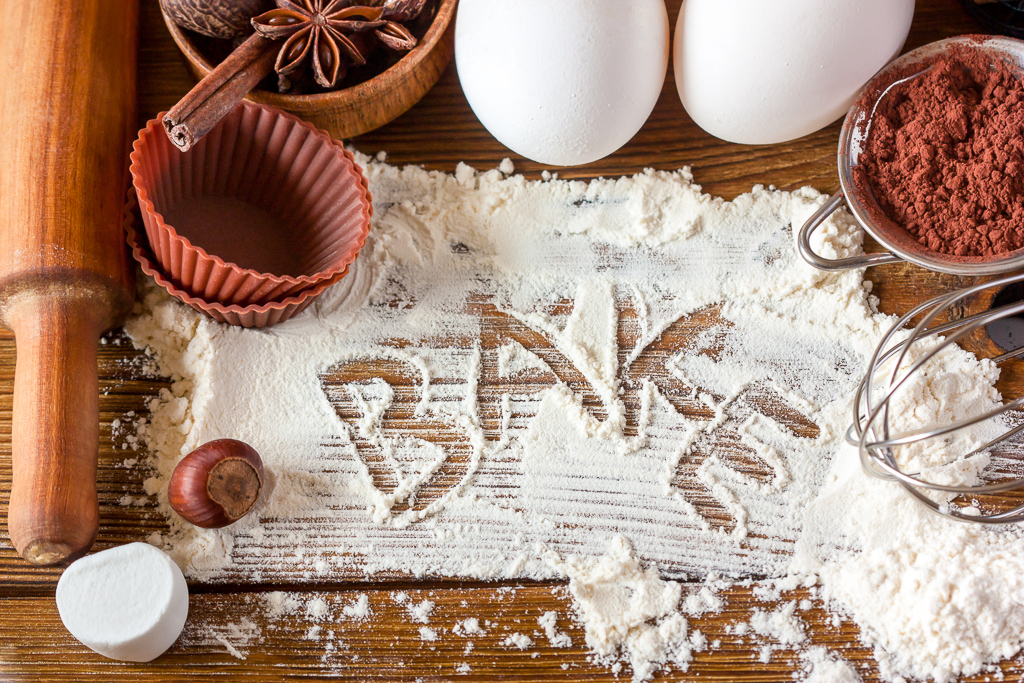Baking Survival Guide

Discover the secrets to perfect baking with our expert tips. From measuring ingredients to oven temperature, we cover all the basics. Learn about using the proper size, measuring ingredients, and placing oven racks; it pays to know your oven.
Contents
Baking is cooking food in the enclosed dry heat of an oven with a consistent and steady temperature.
When discussing baking, most people consider the term “baking” to be about breads, cookies, pies, pastries, and other flour-based baked goods.
However, many other savory dishes are baked, including baked ham, baked potatoes, and endless varieties of the popular casserole recipes.
Many feel lost when it comes to baking, which is unfortunate. With attention to detail and care used in precise measurements, those baked goods will turn out brilliantly.
Use the proper size
Use the proper-sized pan or baking dish a recipe calls for and prepare it according to the recipe. Try not to substitute another baking vessel unless you must.
If you have to swap one pan for another, check the baking pan volumes chart and try to match the characteristics as best as possible.
Measure ingredients first
Measure your ingredients before cooking and place them all in the appropriate-sized preparation bowls or measuring cups. Have all the ingredients within easy reach before assembling that batter or dough.
There are two measuring methods used in baking when measuring flour. The dip and sweep method and the spoon and sweep method.
For more on measuring flour, refer to our Flour Measuring Tips.
If using a cookbook, look at the introduction, where the author will state the preferred measuring method.
Position oven racks
Position oven racks at the specified positions before preheating the oven!
If a recipe doesn't specify the oven rack position, it is safe to assume the rack should be positioned in the center of the oven.
Preheat that oven
Make sure to preheat the oven for at least 10 or 15 minutes to allow it to reach a stable temperature. If baking bread, it is advisable to preheat the oven for at least 30 minutes.
Know your oven
Use an oven thermometer. It pays to know your oven.
The temperature setting on ovens varies tremendously from the actual temperature achieved. A 25-degree difference in the setting vs the actual temperature will affect your results. Use an oven thermometer placed on the center rack to check your oven is accuracy. It is a good idea to test various locations to identify hot and cool spots to help you learn your oven's idiosyncrasies. We have seen oven temperature variations of 50 or even 100 degrees F!
Don't over mix
Follow the timings and steps in the recipe. A very common problem is over-beating batters.
Be careful not to overbeat. Overbeating will make baked goods more tough and can cause eggs to begin to break down.
When beating a batter, stop and scrape down the sides with a rubber spatula at least twice during mixing.
Also, check the bottom of the bowl; many stand mixers don't scrape the bottom of the bowl well.
Keep the oven door closed
Keep the oven door closed with pans placed into the oven quickly and get that oven door closed without delay. Every time you open the oven door to peer at your creation, a lot of heat is released, and the oven will take up to 5 minutes to get back to temperature.
Space and rotate
Space multiple pans or baking dishes apart so that air can circulate freely. Your oven may have hot spots (you checked with an oven thermometer, right?), so rotate the pans from front to back halfway through baking.
If baking two baking sheets of cookies on different racks, switch the racks and rotate them front to back halfway through baking.
Use a timer
Use a timer, but don't blindly rely on the recipe's stated time. Check for doneness using visual cues and following the recipe's timing.
Cooling down
While waiting for the baked goods, setup some space for cooling. In particular, cookies need plenty of space. Set up cooling racks as needed. Inverting cakes requires an extra rack, so it is good to have it on hand to help facilitate the process.
Allow adequate cooling time. Often, home bakers try to remove delicate cakes and baked goods without allowing enough time to cool and set. Removing cakes and quick breads too quickly can cause them to crack.
Comments